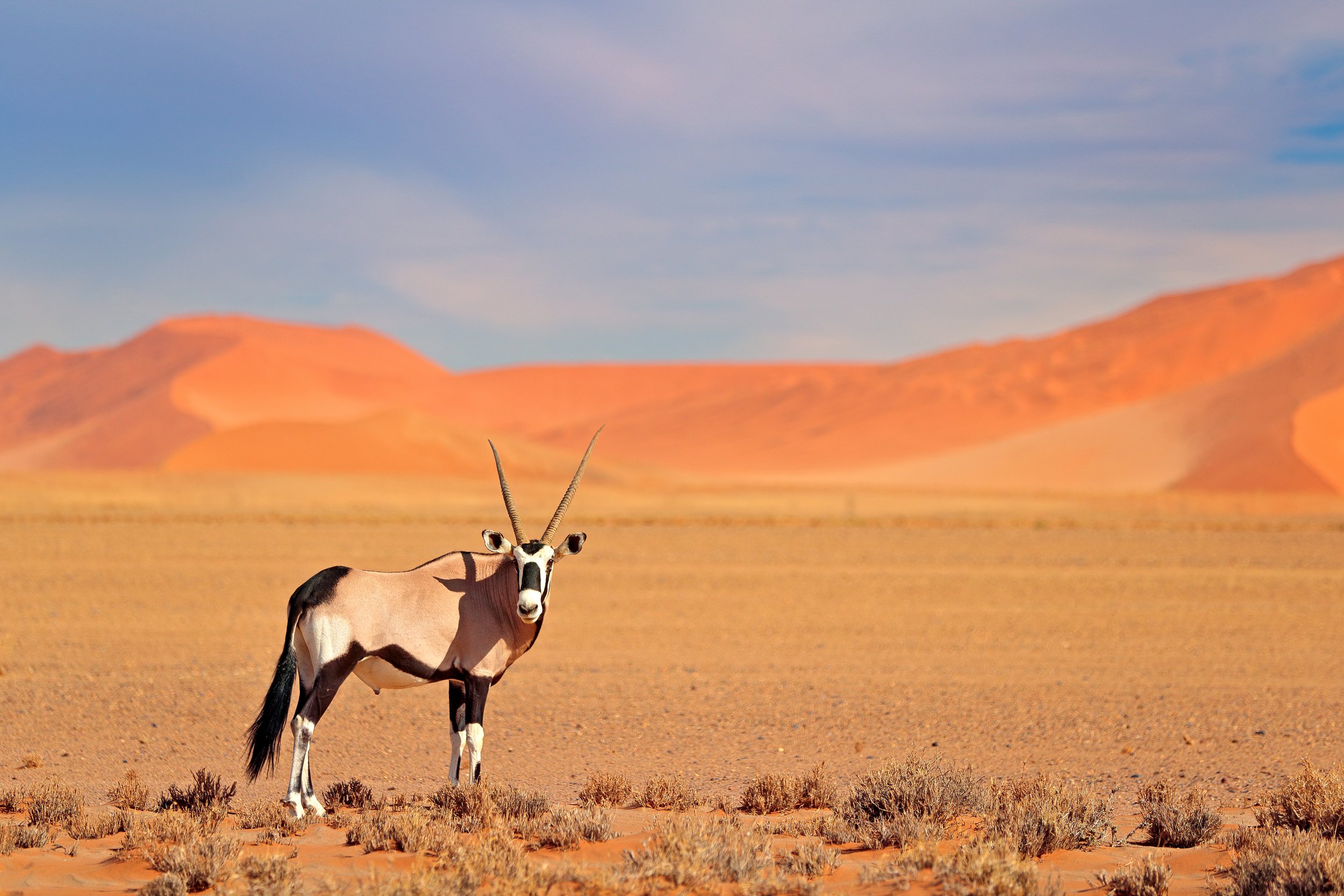
WHAT AWAITS YOU IN THE KALAHARI?
The word “Kalahari” stirs visions of vast landscapes, rolling dunes, relentless sun, and survival against the odds. It’s a place of both harshness and remarkable resilience. Often dubbed one of Africa’s last wildernesses, the Kalahari sprawls across almost 930,000 square km, stretching into Botswana, Namibia and South Africa.
While known for its aridity, this semi-desert also surprises with seasonal rainfall supporting surprising biodiversity. Its deep sands create a land of extremes, demanding innovative survival strategies from both plants and animals.
On the southeastern border of this legendary expanse lies Khamab Kalahari Reserve, the largest private Big-5 reserve in South Africa. This groundbreaking 96,400-hectare project, established in 2007, has a bold ambition: become a leading conservation area in Africa, safeguarding ecosystems and the extraordinary species that call it home.
+ EXPLORE TOURS
FACTS
WHERE IS IT?
North West province of South Africa.
The capital is Mahikeng.
CLOSEST AIRPORTS
Mmabatho Airport (Mahikeng)
Upington International Airport [Upington]
Kimberley Airport (Kimberley)
GEOLOGY AND WILDLIFE
The Kalahari has been called a predator’s paradise. Lion, leopard, African wild dog, cheetah, spotted & brown hyena all call the Kalahari home. Many of the smaller, shy carnivore species are also present. Black-backed jackal, caracal, aardwolf, African wild cat, honey badger, bat-eared fox, Cape fox, meerkat and two mongoose species are always special to see. Lower in the food chain you will find the typical ungulate species of the Kalahari. Adapted to survive in this semi-desert with only short periods of available surface water are gemsbok, eland, giraffe, red hartebeest and springbok.
WHAT'S THE WEATHER LIKE?
The Kalahari is a semi-arid region with an average rainfall of 150mm/5.9in in the southwest to 350mm/13.8in in the northeast. The dry season runs from May to September [low season] and the wet season from October to April [high season]. The summer averages 35C [86F] while winter temperatures average 25C [77F].
LOCAL LANGUAGES
English, Afrikaans and Tswana
WHAT IS THE CURRENCY?
Rand [ZAR]
US Dollars are not accepted.
Foreign exchange services are available in big cities and airports.
PERFECT FOR
Predator Safaris
Conservation experiences
Wildlife and Birding


